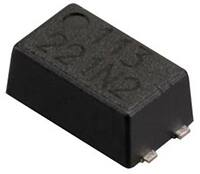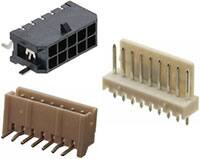Composites and renewable energy: Powering the future
Goal seven of the United Nations’ (UN) sustainable goals encourages progress towards integrating renewable energy into buildings, transport and industry. However, connecting renewable energy sources to the grid faces challenges, including the limited current capacity of overhead lines. How can we make the grid more suitable for renewable energy integration? Here, Robert Glass, Head of Marketing at Exel Composites, explains how composite-cored based conductors are helping deliver renewable energy to infrastructure.
Climate change has arguably become the biggest threat to our planet, with its long term effects being variable in magnitude and difficult to predict.
A powerful change
One major contributor to climate change is the production of greenhouse gases, such as carbon dioxide (CO2) and nitrous oxide (N2O). While emissions produced in 2020 were the lowest recorded as a result of the global pandemic, power generation produces a significant amount of emissions - accounting for 33.3 billion tons by the end of 2019.
The stability in emissions was largely attributed to the global increase in renewable energy transitions. With this in mind, the global uptake of renewable energy must continue to increase if we are to minimise climate change.
Wind power is particularly advantageous over other renewable energy resources as it doesn’t require water and takes up minimal lateral space. But creating powerful, environmentally friendly energy resources requires an equally beneficial material choice to produce and transmit their power.
Clever composites
Composites are already well known for aiding the wind power sector. A significant amount of a turbine blade’s strength comes from its spar caps, the support beams inside the blades. Making the spar caps from carbon fibre reduces the weight of the turbine blade, so manufacturers can produce longer blades to increase power output and efficiency.
However, in order to increase adoption of wind power into widespread infrastructure, we need to optimise the performance of the wind turbines and their power transmission across the grid. The major limiting factor for how much wind power can be connected to the grid is often the maximum current capacity of the overhead lines. Maximum current capacity is determined by the line temperature limit, which ensures a safe distance between the line and the ground. Going beyond the capacity overheats the wire, triggering a ‘thermal sag’, which can lead to power outages and pose a health and safety risk.
One solution is to install more cable lines, but this involves the acquisition of new land rights, passing environmental regulations, lengthy installation time and additional labor costs. A quicker and more cost effective solution is to upgrade the existing lines.
Down to the wire
Traditional power cable wires, or conductors, are Aluminum Conductor Steel Reinforced (ACSR) conductors that consist of an outer aluminum conducting ring with a steel core that provides support and strength. However, steel has a high coefficient of thermal expansion (CTE), which means steel core cables expand significantly when heated, leading to thermal sag.
Instead, Aluminum Conductor Composite Reinforced (ACCR) conductors have a much lower CTE than steel, meaning they can withstand higher temperatures without causing the cable to sag, making the cable a High-Temperature Low-Sag (HTLS) conductor.
Composite cored conductors can carry approximately twice the current of steel cored conductors at much cooler operating temperatures. Composite cores also have a high strength to weight ratio than steel, allowing a greater amount of aluminum in the cable for power transmission without weighting the cable down.
Exel Composites manufactures composite cores for overhead cables, as well as composite materials for wind turbine blades, which can be combined with composite core reinforced cables to bring a large wind power source to urban infrastructure.
Wind power is already a popular clean energy source, but power grid infrastructure often limits its potential. Composites are aiding the adoption of wind power, not only by making turbines more powerful and efficient, but also by increasing the current capacity of power cables. Integrating the most advanced materials and technology into infrastructure will help us step further towards a more sustainable future.


